Chapter: Essentials of Anatomy and Physiology: Urinary System and Fluid Balance
Tubular Reabsorption - Urine Production

Tubular Reabsorption
As the filtrate flows from the Bowman capsule through the proxi-mal convoluted tubule, loop of Henle, distal convoluted tubule, and collecting duct, many of the solutes in the filtrate are reabsorbed. About 99% of the original filtrate volume is reabsorbed and enters the peritubular capillaries. The reabsorbed filtrate flows through the renal veins to enter the general circulation. Only 1% of the orig-inal filtrate volume becomes urine (figure 18.9). Because excess ions and metabolic waste products are not readily reabsorbed, the small volume of urine produced contains a high concentration of ions and metabolic waste products.
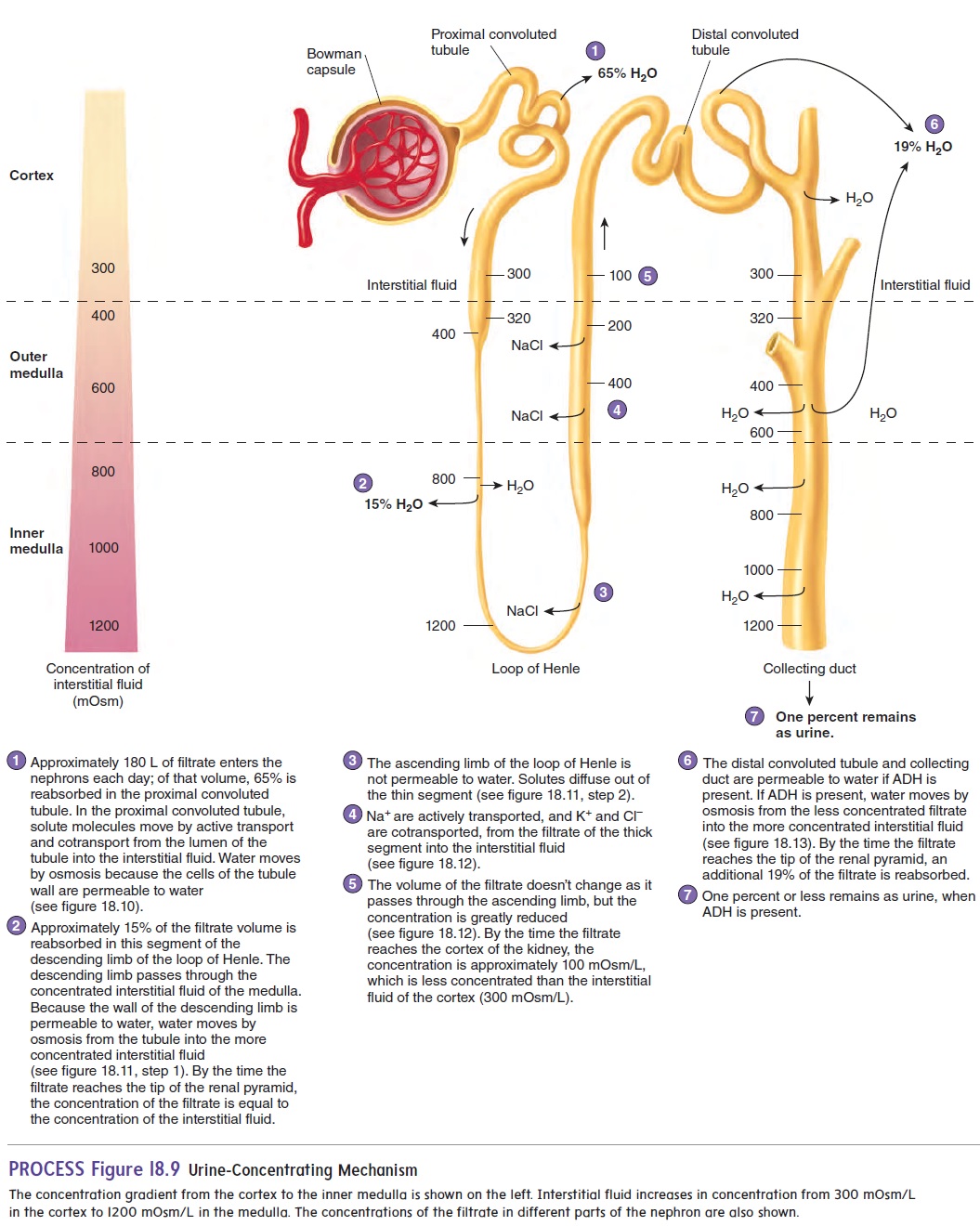
The proximal convoluted tubule is the primary site for the reabsorption of solutes and water. The cuboidal cells of the proximal convoluted tubule have numerous microvilli and mito-chondria, and they are well adapted to transport molecules and ions across the nephron wall by active transport and cotransport. Substances transported from the proximal convoluted tubule include proteins, amino acids, glucose, and fructose molecules, as well as Na+, K+, Ca2+, HCO3−, and Cl−. The proximal convoluted tubule is permeable to water. As solute molecules are transported out of the proximal convoluted tubule into the interstitial fluid, water moves by osmosis in the same direction. The solutes and water then enter the peritubular capillaries. Consequently, 65% of the filtrate volume is reabsorbed from the proximal convoluted tubule (figures 18.9, step 1, and 18.10).
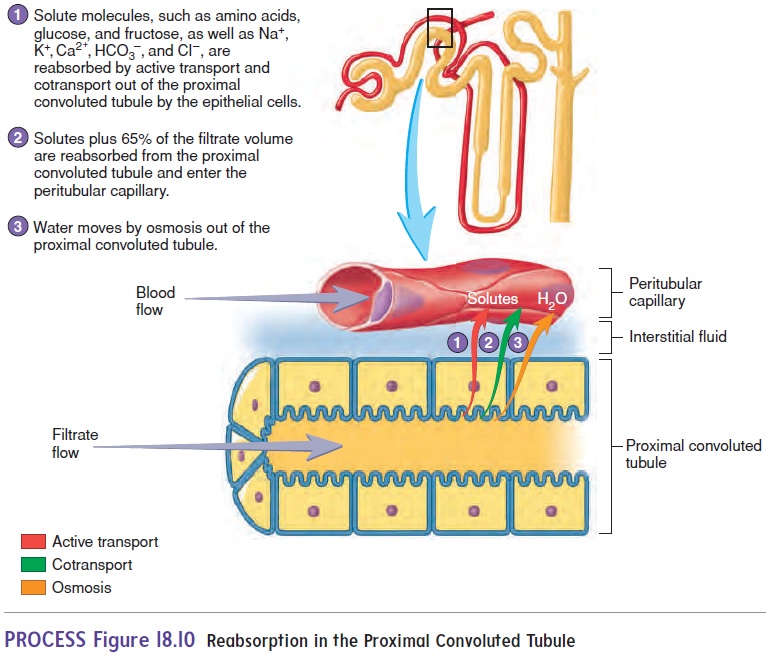
The descending limb of the loop of Henle further concentrates the filtrate. The renal medulla contains very concentrated intersti-tial fluid that has large amounts of Na+, Cl−, and urea. The wall of the thin segment of the descending limb is permeable to water and moderately permeable to solutes. As the filtrate passes through the descending limb of the loop of Henle into the medulla of the kid-ney, water moves out of the nephron by osmosis, and some solutes move into the nephron by diffusion. By the time the filtrate has passed through the descending limb, another 15% of the filtratevolume has been reabsorbed, and the filtrate is as concentrated as the interstitial fluid of the medulla. The reabsorbed water and solutes enter the vasa recta (figure 18.11; see figure 18.9, step 2).
The ascending limb of the loop of Henle dilutes the filtrate by removing solutes. The thin segment of the ascending limb is not permeable to water, but it is permeable to solutes. Consequently, solutes diffuse out of the nephron (figure 18.11; see figure 18.9, step 3).
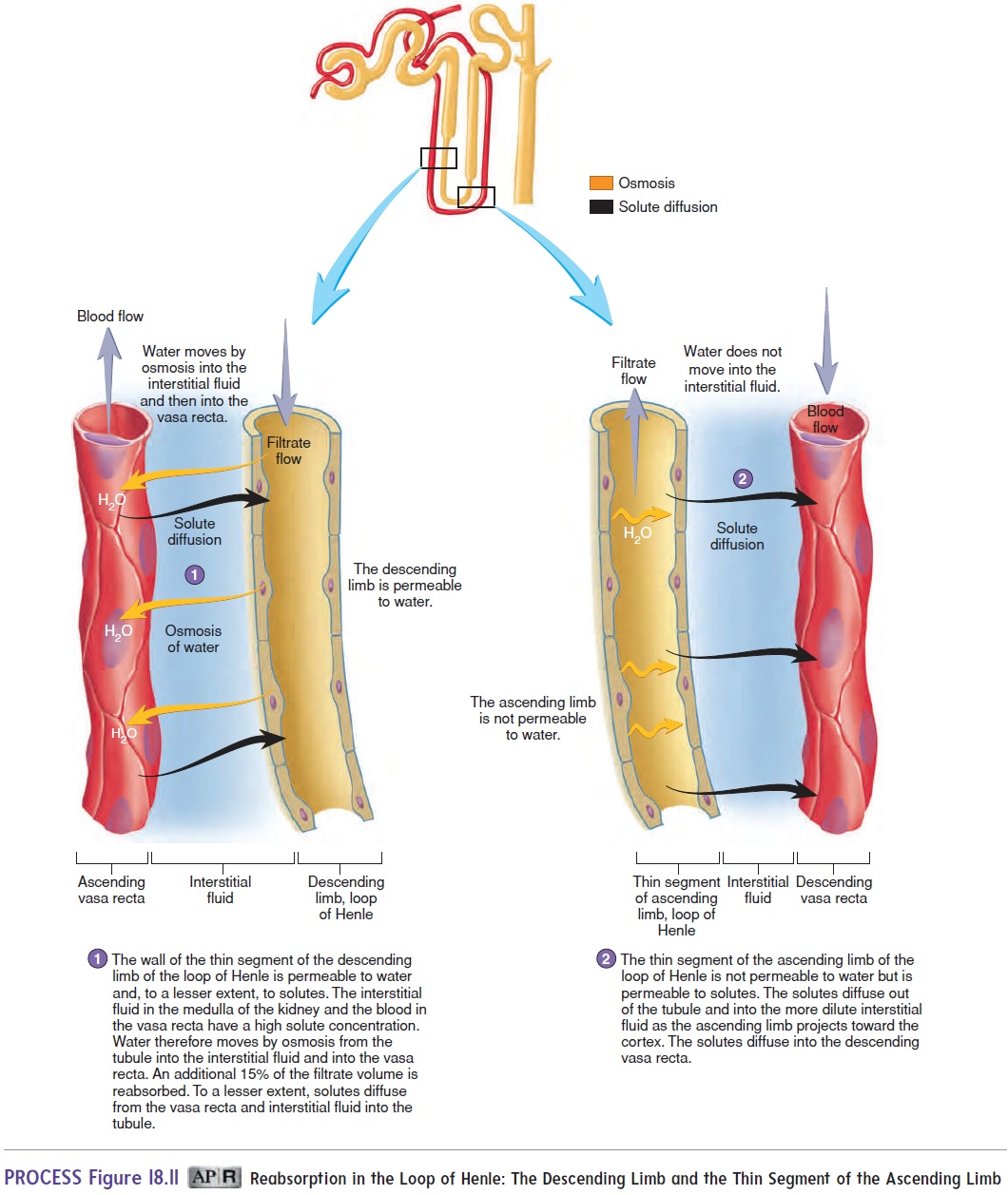
The cuboidal epithelial cells of the thick segment of the ascending limb actively transport Na+ out of the nephron, and K+ and Cl− are cotransported with Na+. The thick segment of the ascending limb is not permeable to water. As a result, Na+, K +, and Cl−, but little water, are removed from the filtrate (see figure 18.9, step 4). Because of the efficient removal of these solutes, the high-ly concentrated filtrate that enters the ascending limb of the loop of Henle is converted to a dilute solution by the time it reaches the distal convoluted tubule (figure 18.12; see figure 18.9, step 5). As the filtrate enters the distal convoluted tubule, it is more dilute than the interstitial fluid of the renal cortex. Also, because of the volume of filtrate reabsorbed in the proximal convoluted tubule and the descending limb of the loop of Henle, only about 20% of the original filtrate volume remains. The solutes transported from the ascending limb of the loop of Henle enter the interstitial fluid of the medulla and help keep the concentration of solutes in the medulla high. Excess solutes enter the vasa recta.
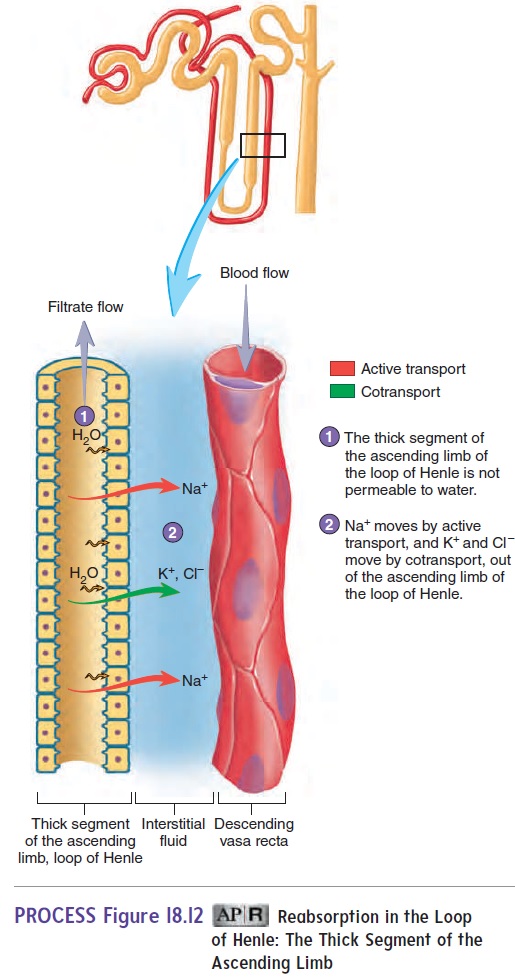
The cuboidal cells of the distal convoluted tubule and col-lecting duct remove water and additional solutes. Na+ and Cl− are reabsorbed. Sodium ions are actively transported, and chloride ions are cotransported. Also, 19% of the original filtrate volume is reabsorbed by osmosis, leaving about 1% of the original filtrate as urine (figure 18.13; see figure 18.9, steps 6 and 7). The reabsorbed water and solutes from the distal convoluted tubule enter the peri-tubular capillaries and the vasa recta from the collecting ducts.
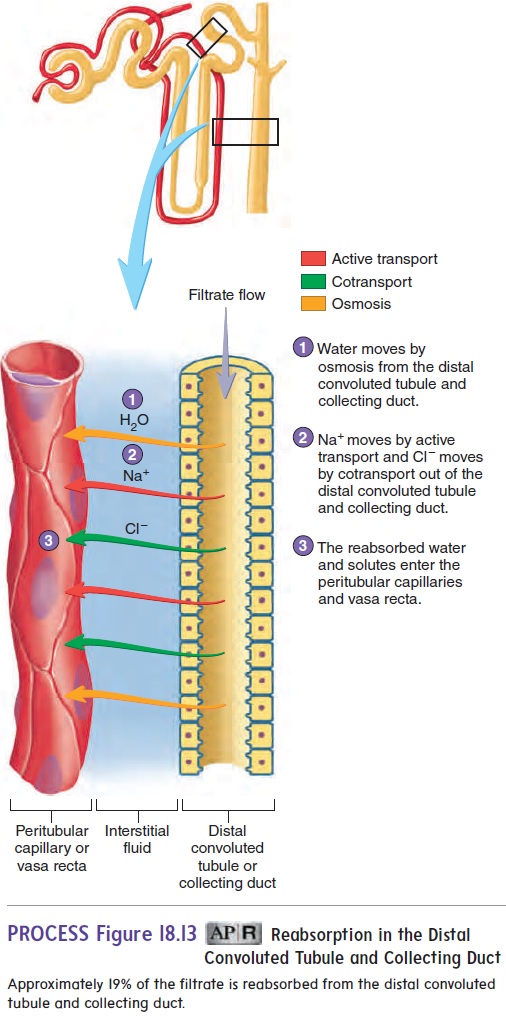
The reabsorption of water and solutes from the distal convo-luted tubule and collecting duct is controlled by hormones, which have a great influence on urine concentration and volume (see “Regulation of Urine Concentration and Volume”).
In summary, most of the useful solutes that pass through the filtration membrane into the Bowman capsule are reabsorbed in the proximal convoluted tubule. Filtrate volume is reduced by 65% in the proximal convoluted tubule and by 15% in the descending limb of the loop of Henle. In the ascending limb of the loop of Henle, Na+, K+, and Cl−, but little water, are removed from the filtrate. Consequently, the filtrate becomes dilute. In the distal convoluted tubule and the collecting duct, additional Na+ and Cl− are removed, water moves out by osmosis, and the filtrate volume is reduced by another 19%, leaving 1% of the original filtrate volume as urine.
Related Topics